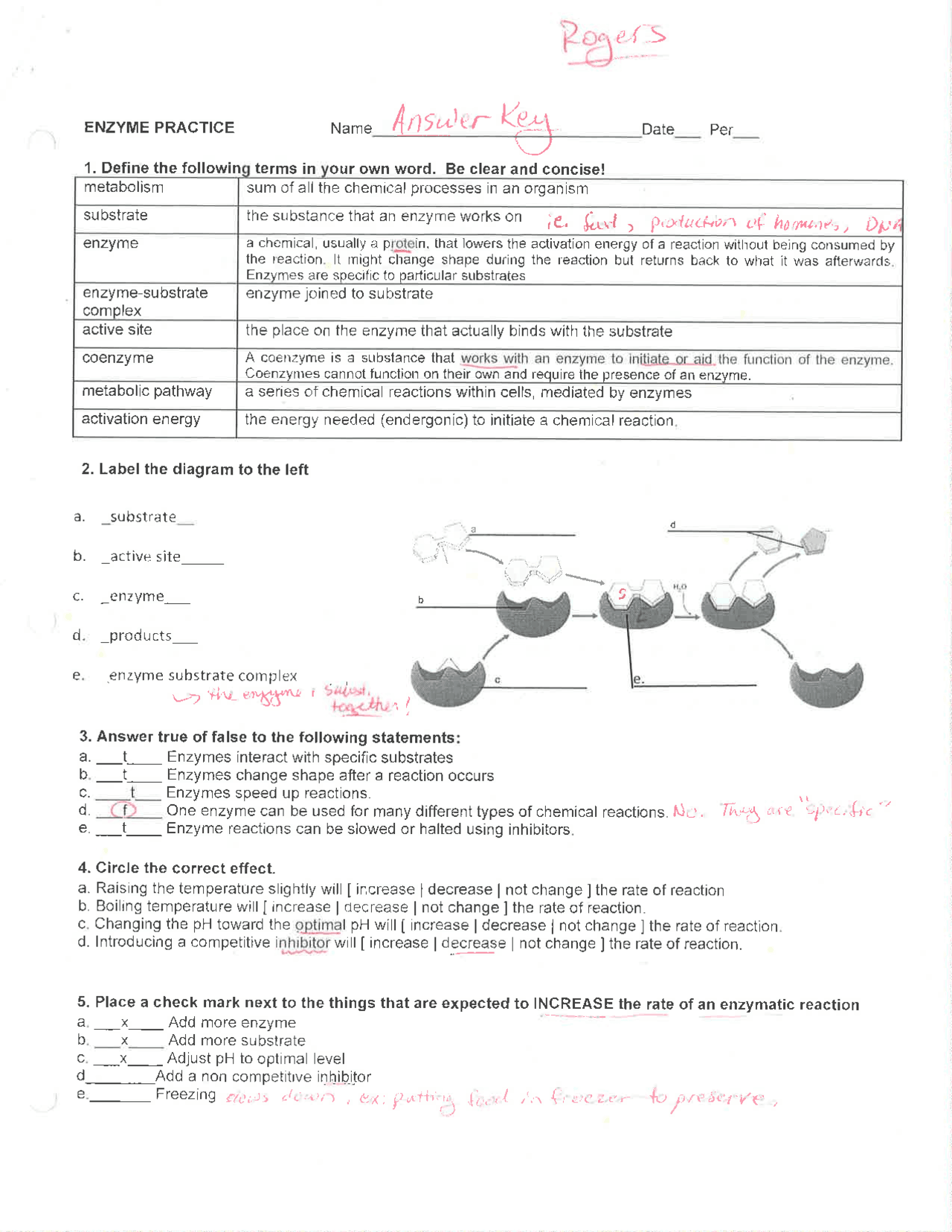5 Enzyme Practice Tips for Students

Studying enzymes can be both fascinating and challenging for students. Enzymes, the catalysts of life, are integral to understanding biochemical processes. Here are five enzyme practice tips tailored specifically for students to enhance their comprehension and performance in enzyme-related topics:
1. Grasp the Fundamentals of Enzyme Action


The first step in mastering enzymes is understanding how they function. Enzymes:
- Lower the activation energy of reactions.
- Are highly specific for their substrates.
- Can be regulated by various mechanisms like feedback inhibition, allosteric regulation, or through enzyme-substrate interaction.
How to Practice:
- Review diagrams illustrating enzyme-substrate interactions to visualize the lock-and-key and induced-fit models.
- Create flashcards detailing different enzyme actions and their corresponding reactions.
- Try to explain enzyme action in your own words to solidify your understanding.
2. Understand Enzyme Kinetics


Enzyme kinetics helps in predicting the rate of enzymatic reactions under various conditions. Here's what to focus on:
- The Michaelis-Menten equation.
- Lineweaver-Burk plots for understanding Vmax and Km.
- The effects of enzyme concentration, substrate concentration, pH, and temperature on reaction rates.
How to Practice:
- Work through problems that involve calculating Km and Vmax.
- Use software or online tools to simulate enzyme kinetics and observe the impact of different variables.
- Create graphs to visually analyze enzyme kinetic data.
3. Learn About Enzyme Inhibitors and Their Mechanism

| Inhibitor Type | Description |
|---|---|
| Competitive Inhibitors | Compete with substrate for active site |
| Non-competitive Inhibitors | Bind to allosteric sites, altering enzyme shape |
| Uncompetitive Inhibitors | Bind only to the enzyme-substrate complex |

How to Practice:
- Study case studies or examples where enzyme inhibition is relevant in medical treatments or drug development.
- Practice distinguishing between different types of inhibitors by analyzing enzyme kinetic data.
🔬 Note: Remember, inhibitors can be reversible or irreversible, affecting the enzyme in unique ways.
4. Experiment with Real Enzymes

If possible, engage with enzymes practically:
- Conduct experiments to observe enzyme activity, like measuring the activity of amylase in saliva.
- Explore virtual labs for simulating enzyme reactions if physical labs are not accessible.
How to Practice:
- Record observations and results to discuss how enzyme conditions change reaction rates.
- Compare your findings with theoretical models to understand practical applications.
5. Apply Enzymes in Biological and Clinical Contexts

Relate your knowledge to real-life scenarios:
- Explore how enzymes are involved in digestion, DNA replication, and energy production.
- Understand the clinical relevance, such as enzyme replacement therapies or diagnosing diseases through enzyme assays.
How to Practice:
- Read case studies or scientific articles on enzyme-related diseases.
- Create presentations or projects showing how enzymes can be used in treatments or research.
In summary, enzymes are crucial in various biological processes, and understanding them deeply can enhance your overall knowledge in biochemistry. By mastering these tips, you'll not only excel in your academic pursuits but also gain an appreciation for the intricate control systems that govern life at a molecular level. Remember to always connect theoretical knowledge with practical applications to deepen your understanding of enzymes.
How can I remember the different types of enzyme inhibitors?

+
To remember the types of enzyme inhibitors, think of them in terms of their interaction with the enzyme:
- Competitive - they compete for the substrate’s spot.
- Non-competitive - they bind elsewhere, changing the enzyme’s shape.
- Uncompetitive - they only bind when the substrate is already there.
What’s the importance of understanding enzyme kinetics?

+
Understanding enzyme kinetics allows you to:
- Predict how fast a reaction will go under certain conditions.
- Optimize conditions for enzyme activity in industrial or medical applications.
- Diagnose metabolic diseases by analyzing how enzymes behave.
How can enzyme studies be relevant to everyday life?

+
Enzymes are involved in:
- Digesting food (like amylase in saliva).
- Producing energy (glycolytic enzymes).
- Medical diagnostics and treatments (e.g., measuring enzyme levels to diagnose heart disease).
- Biotechnological applications, like using enzymes in washing detergents to break down stains.